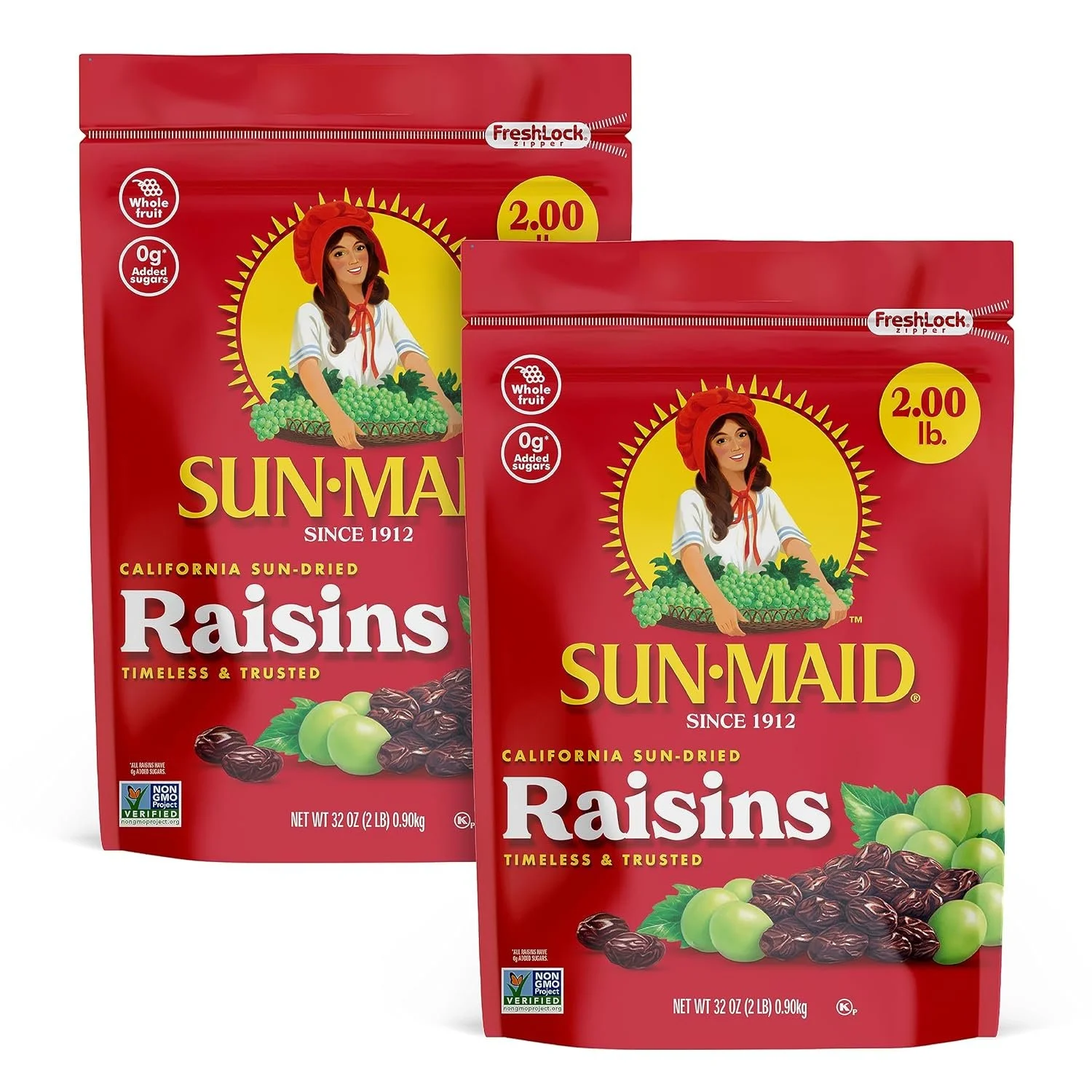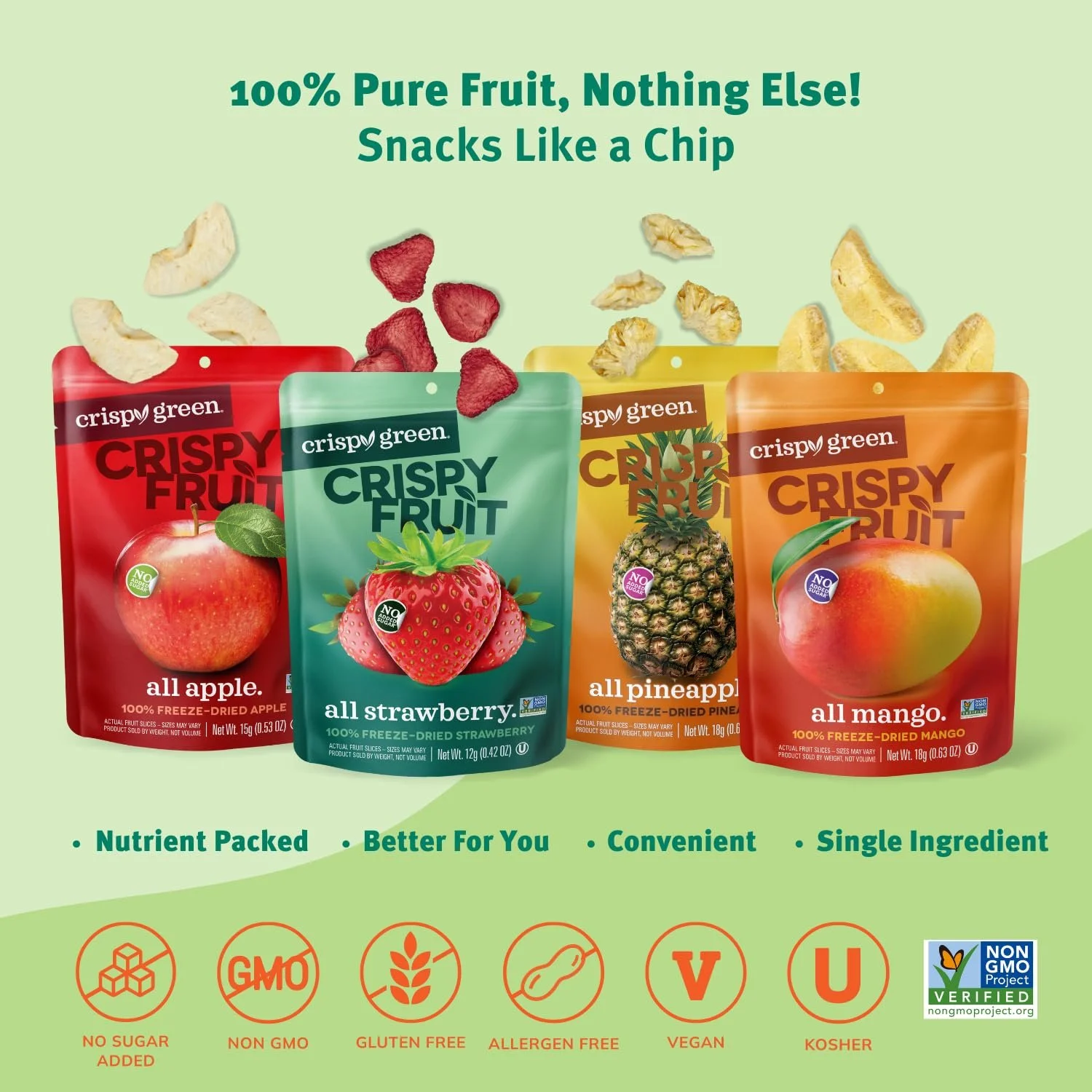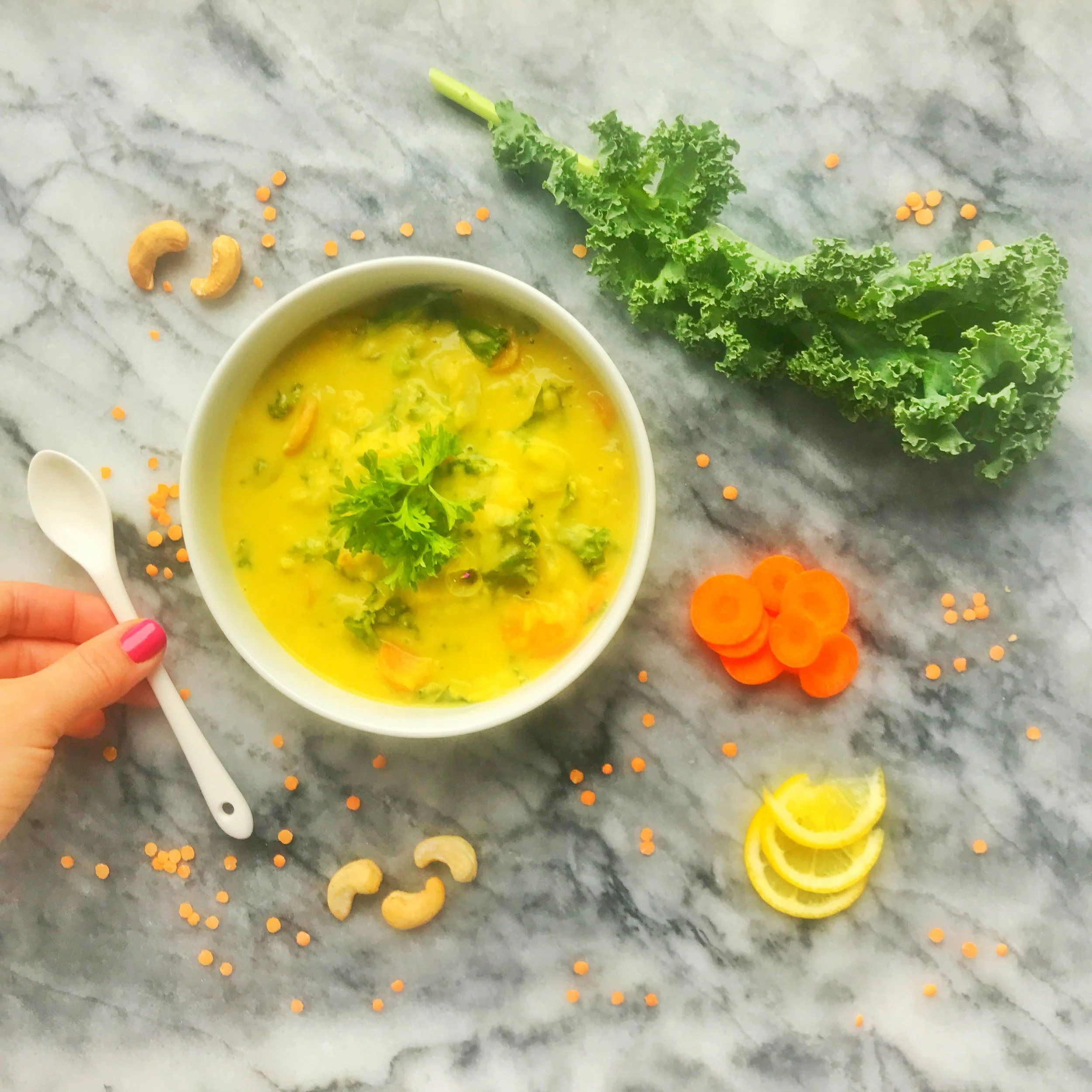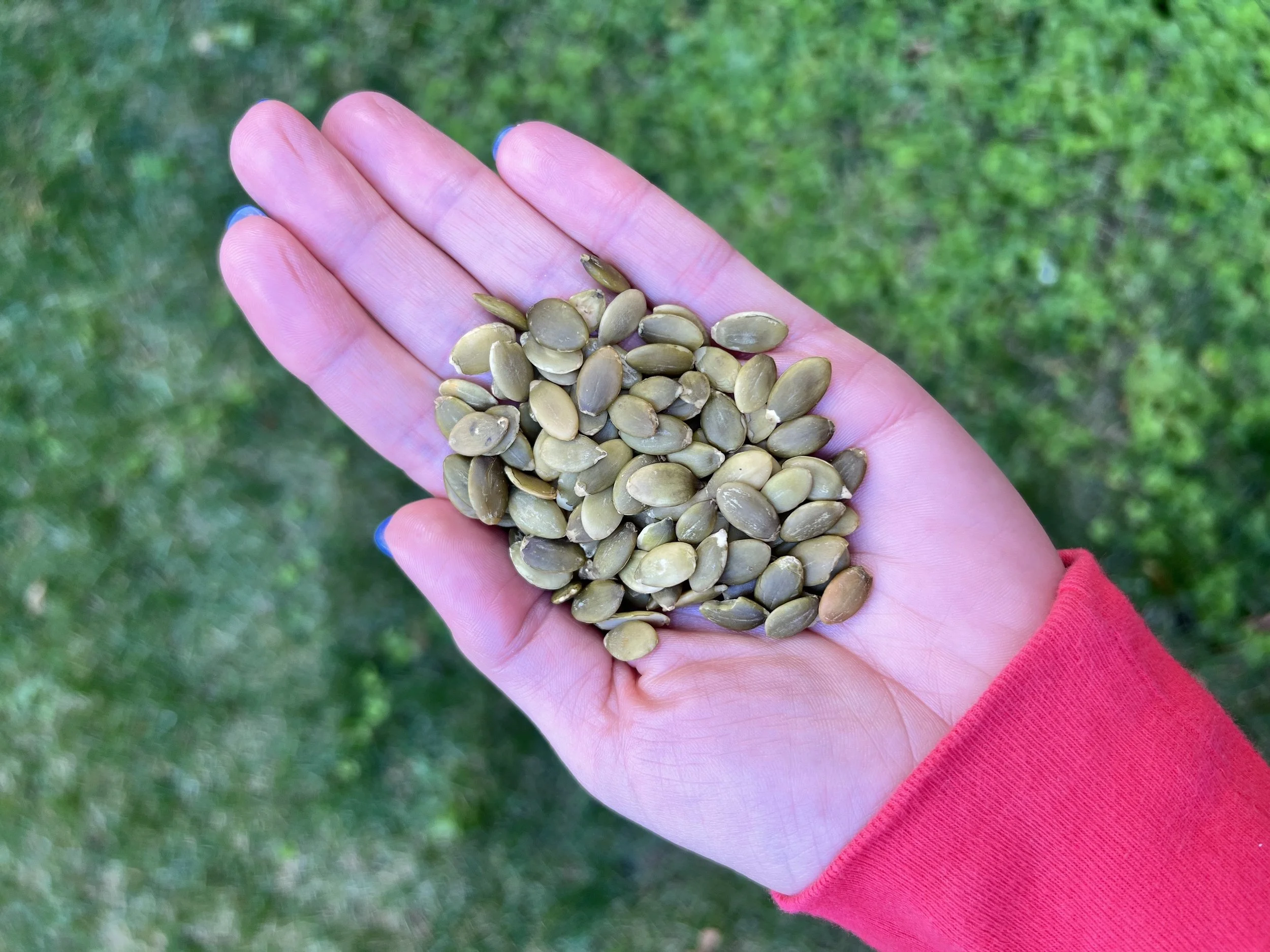How to Meet Nutrient Needs While Managing a Child’s Food Allergies
This post may contain affiliate links. If you choose to purchase a product through a link, I will receive a small commission - this in no way impacts the amount you pay. Affiliate links are marked with an asterisk (*).
It may feel like navigating your child’s nutrition is a daily challenge—add food allergies to the mix, and it can feel like you’re walking through a dietary minefield. Whether your child is allergic to dairy, peanuts, soy, or another common allergen, you might worry they’re missing out on essential nutrients during these critical growth years.
The good news? With the right knowledge and a little creativity, your child can still enjoy a balanced, nourishing diet. In this post, we’ll explore how to hit nutritional goals despite food allergies while focusing on the nutrients found in the top 9 allergens, tips for smart food label reading, and allergy-friendly foods that are both safe and nutritious.
Key Nutrients and the Role of the Top 9 Allergens
The top nine potential food allergens responsible for over 90% of all food allergies (milk, eggs, fish, shellfish, tree nuts, peanuts, wheat, soybeans, and sesame) aren’t just common food triggers; they’re also highly nutritious. When a child avoids one or more of these foods, it’s important to understand what nutrients might be missing and how to replace them with safe, nourishing alternatives.
This foundational knowledge makes it much easier to plan meals that are both allergy-safe and developmentally appropriate. Let’s go through a few of the most common micro- and macronutrients found in food allergens and how to easily replace them.
Macronutrients
Protein: Protein is essential for growing children. It helps build and repair body tissues, supports the immune system, and keeps kids feeling full and energized. Many common allergens—especially milk, eggs, peanuts, soy, and fish—are significant sources of protein.
Protein Needs by Age: The recommended daily intake of protein varies depending on factors such as age, sex, and activity level; however, in general, it is recommended that protein make up about 10-30% of total daily caloric intake. The formula to calculate protein needs is:
Daily protein needs = ½ gram of protein per pound of body weight.
Here is a list of the Recommended Dietary Allowance (RDA) for protein for each age group:
Toddlers (1-3 years): ~13 grams of protein per day or 2-ounce equivalents
Preschoolers (4-8 years): ~19 grams of protein per day or 4-ounce equivalents
School-age children (9-13 years): ~34 grams of protein per day or 5-ounce equivalents
Adolescents (14-18 years): ~46-52 grams of protein per day or 5 to 6.5-ounce equivalents (depending on their gender and level of physical activity)
Allergy-Friendly Alternatives: If your child avoids one of the most common protein-rich allergens, you can turn to alternatives like:
Lentils (~18 grams of protein per 1 cup cooked)
Quinoa (~8 grams of protein per 1 cup cooked)
Lean meats like roasted chicken (35 grams of protein per 1 cup chopped roasted chicken) or turkey (~12 grams of protein for a thick slice of cooked turkey)
Seeds such as sunflower (21 grams of protein per ¾ cup) or pumpkin
Tofu (~22 grams protein per ½ cup) and edamame are good options if soy is tolerated
Healthy Fats: Healthy fats are another important macronutrient, particularly for toddlers and young children, as they support brain development and help the body absorb fat-soluble vitamins (A, D, E, and K). Common food allergens, such as tree nuts, peanuts, fish, and sesame, contain healthy fats.
Saturated vs. Unsaturated:
Saturated fats are typically solid at room temperature and are found in animal products like butter, cheese, and red meat, as well as some tropical oils (like coconut oil). While small amounts are okay, too much saturated fat can increase cholesterol levels over time.
Unsaturated fats are generally liquid at room temperature and are considered heart-healthy. These fats are essential for kids’ growing brains and bodies, and they help absorb certain vitamins (A, D, E, and K). There are two main types of unsaturated fats:
Monounsaturated fats (MUFA) – found in allergy-friendly olive oil, avocado, and pumpkin seeds.
Polyunsaturated fats (PUFA) – include essential fatty acids like omega-3 and omega-6.
Omega-3 fatty acids include DHA, EPA, and ALA, and are vital for brain development, vision, and reducing inflammation (especially DHA and EPA, which are mainly found in fatty fish like salmon, sardines, and herring). However, many kids (especially those with allergies or picky eating habits) don't eat fish and seafood regularly.
Omega-3 Needs by Age:
Here are the Recommended Adequate Intake ranges for total omega-3s for each age to try to meet through foods and/or supplements:
0 to 12 months: 0.5 grams/day
1 to 3 years: 0.7 grams/day
4 to 8 years: 0.9 grams/day
9 to 13 years (boys): 1.2 grams/day
9 to 13 years (girls): 1.0 grams/day
14 to 18 years (boys): 1.6 grams/day
14 to 18 years (girls): 1.1 grams/day
Allergy-Friendly Alternatives: If your child doesn't eat fish, you can focus on ALA, the plant-based omega-3 that the body can convert into DHA and EPA (though conversion is limited). To help meet their needs, try to include these foods as allergies permit:
Chia seeds
Flaxseeds
Walnuts (if allergy-safe)
Hemp seeds
Canola oil
Edamame and soy products (if allergy-safe)
** Use algae-based omega-3 supplements: These provide pre-formed DHA and EPA, just like fish oil, but without the potential allergens.
Micronutrients
Calcium: Well known for its role in building strong bones and teeth, calcium also supports nerve signaling and muscle function. Dairy products are a major source of calcium.
Calcium Needs by Age:
Babies 6 to 11 months old need 260 mg of calcium a day.
Kids 1 to 3 years old need 700 mg of calcium a day (2–3 servings).
Kids 4 to 8 years old need 1,000 mg of calcium a day (2–3 servings).
Kids and teens 9 to 18 years old need 1,300 mg of calcium a day (4 servings).
Allergy-Friendly Alternatives: If your child is avoiding milk, be sure to include alternatives like:
Fortified plant-based milks (soy milk has 300mg per serving, and pea protein milk has about 445mg per serving)
Calcium-set tofu (½ cup cooked has 434mg calcium)
Leafy greens such as kale (1 cup cooked has 177mg calcium) and bok choy (1 cup cooked has 185mg calcium)
Fortified cereals
Vitamin D: This vitamin works hand-in-hand with calcium to support bone health and plays a key role in immune function. Natural sources include fatty fish and egg yolks.
Vitamin D Needs: Babies under 12 months need 400 IU of vitamin D daily, while children 12 months and older need 600 IU daily. Some kids are more at risk for vitamin D deficiency if they have little sunlight exposure, have darker skin color, are lactose intolerant, or eat a vegetarian or vegan diet.
Allergy-Friendly Alternatives: For children with allergies, fortified non-dairy milks and safe sun exposure are reliable options. Supplements may also be recommended depending on your child’s diet and risk of deficiency.
Pea protein milk - ~200 IU vitamin D per serving
Soy milk (if not allergic) - ~120 IU vitamin D per serving
Iron: Crucial for transporting oxygen through the blood and supporting brain development. Red meat, shellfish, and eggs are rich in iron.
Iron Needs by Age:
Infants aged 7–12 months need 11 milligrams of iron a day.
Toddlers aged 1–3 years need 7 milligrams of iron each day
Kids ages 4–8 years need 10 milligrams
Kids ages 9–13 years need 8 milligrams
Teen boys should consume 11 milligrams of iron daily, and teen girls should consume 15 milligrams
Allergy-Friendly Alternatives: Meats such as turkey (2mg iron per serving) and beef (2.5mg iron per serving) are excellent sources of iron that is easily absorbed. There are plant-based sources too, including:
Lentils (½ cup cooked has 3.3mg iron)
Lima beans (1 cup cooked has 4.9mg iron)
Fortified cereals
Spinach (1/2 cup cooked has 3.2mg iron)
***Pair plant-based sources with foods high in vitamin C (like strawberries or bell peppers) to boost iron absorption
Zinc supports immune health, wound healing, and growth. Animal products, such as dairy and shellfish, are among the top sources.
Zinc Needs by Age:
7 months to 3 years old - 3mg
4-8 years old - 5mg
9-13 years old - 8mg
14-18 years old - males need about 11mg and females need 9mg
Whole grains like oats (2.3mg per serving)
Pumpkin seeds (2.2mg per serving)
Lentils (1.3mg per serving)
B vitamins: Particularly vitamin B12, B vitamins are necessary for energy metabolism and brain health. These are typically found in animal-based products like eggs, fish, and dairy.
B12 Needs by Age:
7-12 months old - 0.5mcg
1-3 years old - 0.9mcg
4-8 years old - 1.2mcg
9-13 years old - 1.8mcg
14-18 years old - 2.4mcg
Ground beef (2.4 mcg per serving)
Fortified cereal (0.6 mcg per serving)
Nutritional yeast (8.3- 24 mcg per serving, depending on the brand)
Vitamin B12 supplement may be needed to ensure they’re getting enough
Reading Food Labels: What Parents Need to Know
As a pediatric dietitian, I’m focused on educating the parents of food-allergic kids about food labeling and food allergens. To that end, here are my top tips for caregivers when reading labels:
Always read the entire label, every time—ingredients can change, even in trusted brands.
Look for advisory statements. Even if the allergen isn’t an ingredient, cross-contact is a risk.
Double-check with new packaging—reformulations often occur, sometimes quietly.
Use allergy-friendly brands (like MadeGood, Enjoy Life, and Free2b) that clearly label and are free from common allergens.
When in doubt, don’t risk it — If a label is unclear, missing, or suspicious, it’s safest to avoid the product entirely.
When your child has a food allergy, label reading eventually becomes second nature. Still, it’s essential to stay current with the latest guidance, particularly as the Food and Drug Administration (FDA) updates its policies. Here is a quick breakdown of the key FDA updates for food labeling as of 2024:
Coconut is no longer labeled as a tree nut. You won’t see “Contains: tree nuts (coconut)” anymore, but coconut will still appear in the ingredient list. This change may roll out slowly over time.
The list of tree nuts requiring allergen labeling is now shorter. Only 12 specific tree nuts, including almond, black walnut, brazil nut, California walnut, cashew, Filbert (hazelnut), heartnut (Japanese walnut), Macadamia nut, pecan, pine nut, pistachio, English, and Persian walnuts, must be labeled. Others—like chestnut, kola nut, and shea nut—are no longer required to be listed under tree nuts.
Milk labeling now includes milk from more animal sources. Products made with milk from goats, sheep, or other ruminants must be labeled as milk allergens (e.g., "Contains: goat milk").
Egg labeling now includes eggs from more birds. Duck, quail, and other bird eggs must now be labeled as “egg” allergens, just like chicken eggs (e.g., "Contains: duck egg").
Watch for new “Free from” claims. The FDA clarified that products cannot claim “Free from [allergen]” if they also say “May contain” that same allergen. Always read labels carefully, even on trusted products.
Allergy-Friendly Foods That Support a Balanced Diet
Feeding a child with food allergies doesn’t mean meals have to be bland or boring. As a registered dietitian and mom of three, I regularly work with families who need help making mealtime exciting. Here are a few versatile and nutrient-rich foods that can help you meet your child’s nutrition goals without exposure to allergens:
Protein Powerhouses
Cooked lentils and beans like chickpeas, black beans, and cannellini beans
Quinoa, teff, and amaranth
Turkey or chicken breast
Sunflower seed or pumpkin seed butters
Beef or lamb (if not restricted)
Fruit and Veggie Focused Snacks
Apple slices with seed butter*
Raisins* and other dried fruits (freeze-dried* works too!)
Frozen banana bites dipped in allergen-free dark chocolate
Berries in coconut yogurt (if coconut is tolerated)
Melon or watermelon wedges
Green smoothie (if coconut is tolerated)
Veggie Tray with Mini Carrots, Cucumber spears or rounds, celery sticks, and an allergy-friendly dip
Healthy Fats
Avocado, guacamole, or this delicious Creamy Avocado Banana Chocolate Pudding
Seeds and seed butter (this counts as a protein or healthy fat)
Olives: pitted and sliced in half to reduce choking risk
Add a drizzle of olive oil or a sprinkle of hemp seeds to any veggie
Whole Grains (Gluten-Free, if Needed)
Rice noodles*
Oats (double check label for GF)
Buckwheat
Millet
Teff
Sorghum
Dairy-Free Calcium Sources
Chia seed pudding with fortified plant milk
Chia seed pudding made with fortified plant milk
Collard greens or bok choy
Kale, broccoli, and okra
Allergy-Friendly Products to Explore
Enjoy Life Foods: Free of the top 14 allergens
MadeGood Snacks: Allergy-Friendly and school-safe
Partake Foods: Cookies and snacks, free from the top 9 allergens
Superseedz and 88 Acres: Seed butters and snack bars, made in allergen-safe facilities
Final Thoughts: Nutrition is Still Within Reach
Food allergies can feel overwhelming at first, but rest assured—your child can still grow up strong, healthy, and well-fed. With a focus on nutrient-dense, allergen-free options and some label-savvy grocery shopping, you can confidently support your child’s health at every stage.
And remember, you don’t have to go it alone. Pediatric dietitians like me are focused on tailoring meal plans to meet your family’s specific needs, so don’t hesitate to ask for guidance.
With the right tools and support, your child’s nutrition journey can be just as joyful—and just as delicious—as any other.
If you’re interested in learning more about how and when to integrate foods into your baby's diet, as well as how to reduce the risk of food allergies during infancy, check out my new baby-led feeding + food allergy prevention guide and cookbook!
And if you're looking for personalized nutrition support for your babies or kids, I am currently accepting new clients in my virtual private practice.
Thanks for reading!
Products Featured in this Post





























